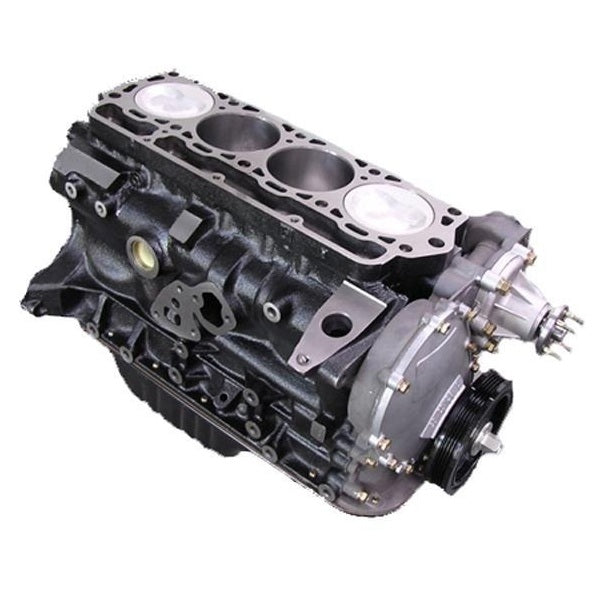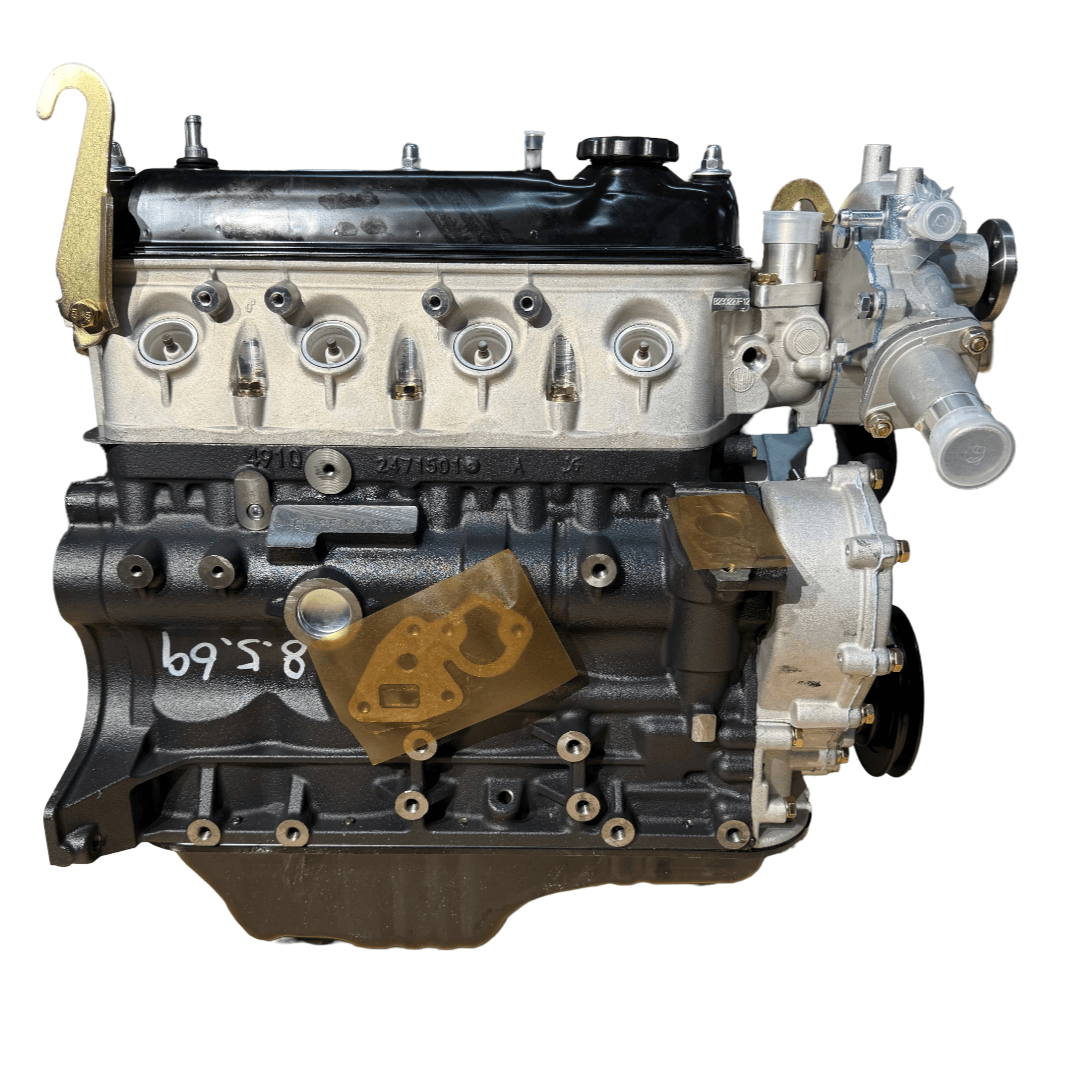Why the Engine Is the Finest Option for Efficiency and Effectiveness in Your Car
The engine stays a crucial part in auto design, primarily due to its significant influence on both performance and effectiveness. As developments in technology enable smaller sized engines to supply exceptional power while enhancing gas economic climate, the integration of features such as turbocharging and crossbreed systems ends up being significantly essential.
Recognizing Engine Types
Understanding the different kinds of engines is critical for enhancing performance and effectiveness in vehicle style. The key engine kinds consist of internal combustion engines (ICE), electric engines, and crossbreed systems, each offering distinct benefits and restrictions.
Interior burning engines, which can be more categorized into gas and diesel variations, count on the burning of gas to generate power. Gas engines normally give higher RPMs and better acceleration, while diesel motor are known for their torque and gas performance, making them excellent for sturdy applications.
Electric engines, on the various other hand, use electric motors powered by batteries or gas cells. They provide rapid torque distribution, causing smooth velocity and lower discharges. The effectiveness of electric engines is substantially greater than that of ICEs, making them a preferred choice for eco-conscious customers.
Hybrid systems combine both inner combustion and electric engines, leveraging the strengths of both innovations. They maximize fuel usage by using electric power at reduced speeds and switching to gasoline or diesel for higher rates or much heavier tons.
Selecting the best engine type is crucial for achieving preferred efficiency metrics and ecological sustainability in modern auto design.
The Impact of Engine Dimension
Engine size regularly plays a pivotal duty in determining a car's performance and effectiveness. Generally measured in litres or cubic centimeters, engine size directly affects the power outcome and torque attributes of an automobile.
Nevertheless, boosted engine size frequently associates with reduced gas efficiency. Bigger engines consume more gas, bring about greater exhausts and operational prices. Makers must stabilize the demand for power with the need for gas economic climate. Smaller engines can deliver ample efficiency for day-to-day driving while advertising far better performance, making them a popular selection in mid-size and compact automobiles.
In addition, developments in engine layout, such as turbocharging and straight gas injection, enable smaller sized engines to accomplish power degrees comparable to their larger equivalents. This pattern stresses the significance of not solely focusing on engine dimension but also thinking about total vehicle layout and modern technology (4y engine). Inevitably, the influence of engine dimension on performance and efficiency emphasizes the demand for customers to assess their particular driving requirements and preferences when picking an automobile
Advanced Engine Technologies
Developments in engine technologies have actually substantially improved the landscape of auto efficiency and effectiveness, structure upon the foundational principles established by engine dimension. Especially, developments such as turbocharging and direct fuel injection have enabled smaller sized engines to provide power levels previously connected with larger counterparts. Turbochargers compress air entering the engine, permitting boosted power result without a corresponding rise in engine size, while straight injection maximizes gas shipment, boosting combustion effectiveness.
Furthermore, variable shutoff timing systems have become a critical technology, enabling engines to change valve operation based on driving problems. This flexibility boosts both performance throughout acceleration and gas effectiveness throughout cruising. Crossbreed and electric engine innovations even more show the change in automobile style, combining typical interior combustion engines with electrical motors to take full advantage of efficiency while lowering emissions.
Furthermore, advancements in materials science have led to lighter, more resilient engine elements, better improving efficiency and durability. The assimilation of advanced electronic devices and engine control systems additionally allows for real-time changes, making sure optimum efficiency throughout numerous conditions. Collectively, these innovative engine modern technologies not just enhance vehicle performance however likewise add to an extra sustainable auto future, demonstrating the continuous advancement of engine layout.
Harmonizing Power and Performance
Striking an equilibrium between power and efficiency is essential in contemporary automobile layout as makers seek to satisfy increasingly stringent emissions policies while pleasing consumer demand for performance (4y engine). The challenge hinges on optimizing engine features to provide durable power outcome without giving up fuel economic climate
To achieve this balance, designers utilize different approaches, such as turbocharging, which boosts engine power by requiring in even more air, permitting a smaller engine variation that boosts fuel efficiency. Variable valve timing technologies likewise play a substantial role, making it possible for engines to change their efficiency characteristics based upon driving problems, therefore enhancing both power and performance.
Additionally, innovations in products and manufacturing techniques have actually resulted in lighter engine parts, which minimize overall automobile weight pop over to these guys and improve fuel performance without endangering power. Crossbreed technologies have actually also arised as a feasible solution, combining standard internal burning engines with electrical powertrains to supply a boost in efficiency while keeping lower exhausts.

Future Patterns in Engine Design

Additionally, the advancement of advanced products, such as lightweight composites and high-strength alloys, is established to revolutionize engine components. These materials not only minimize weight however additionally boost thermal performance, thereby optimizing performance. Additionally, producers are checking out variable compression proportions, permitting engines to adjust learn this here now to different driving conditions, improving both power output and fuel economic climate.
Better, the surge of fabricated knowledge and equipment understanding in engine layout is making it possible for predictive maintenance and real-time performance optimization. This technology can cause engines that self-adjust for maximum efficiency based upon driving patterns.

Final Thought
In verdict, the engine acts as a critical component in achieving optimum performance and performance in modern vehicles. Advanced modern technologies, such as turbocharging and hybrid systems, boost power output while reducing gas intake and exhausts. The interplay in between engine size and style remains to advance, driving developments that stabilize electrifying efficiency with ecological sustainability. As vehicle design proceeds, the concentrate on establishing reliable, effective engines will certainly continue to be paramount in forming the future of transportation.
Furthermore, innovations in engine style, such as turbocharging and direct gas injection, enable smaller engines to accomplish power levels similar to their bigger equivalents.Innovations in engine innovations have dramatically reshaped the landscape of automotive performance and efficiency, building upon the foundational principles developed by engine dimension. Turbochargers compress air entering the engine, allowing for increased power result without an equivalent rise in engine dimension, while direct shot enhances fuel delivery, boosting burning effectiveness.
Hybrid and electrical engine modern technologies better illustrate the change in automotive layout, incorporating go to this web-site typical interior burning engines with electrical motors to make best use of efficiency while reducing discharges.
Jointly, these sophisticated engine modern technologies not just improve lorry performance yet likewise add to a more sustainable automotive future, showing the ongoing advancement of engine design. (4y engine)
Comments on “How to Troubleshoot Common Issues with the 4Y Engine”